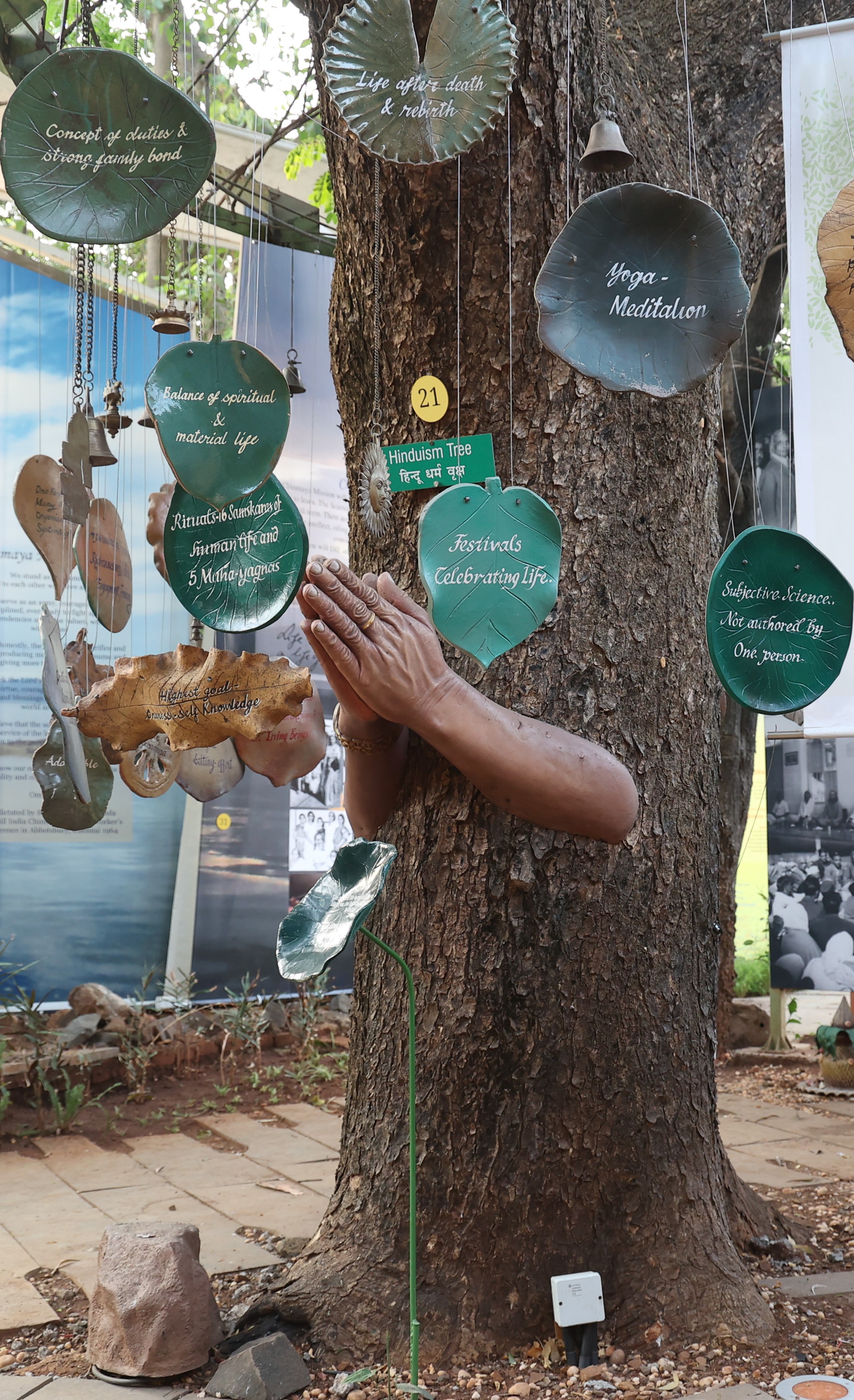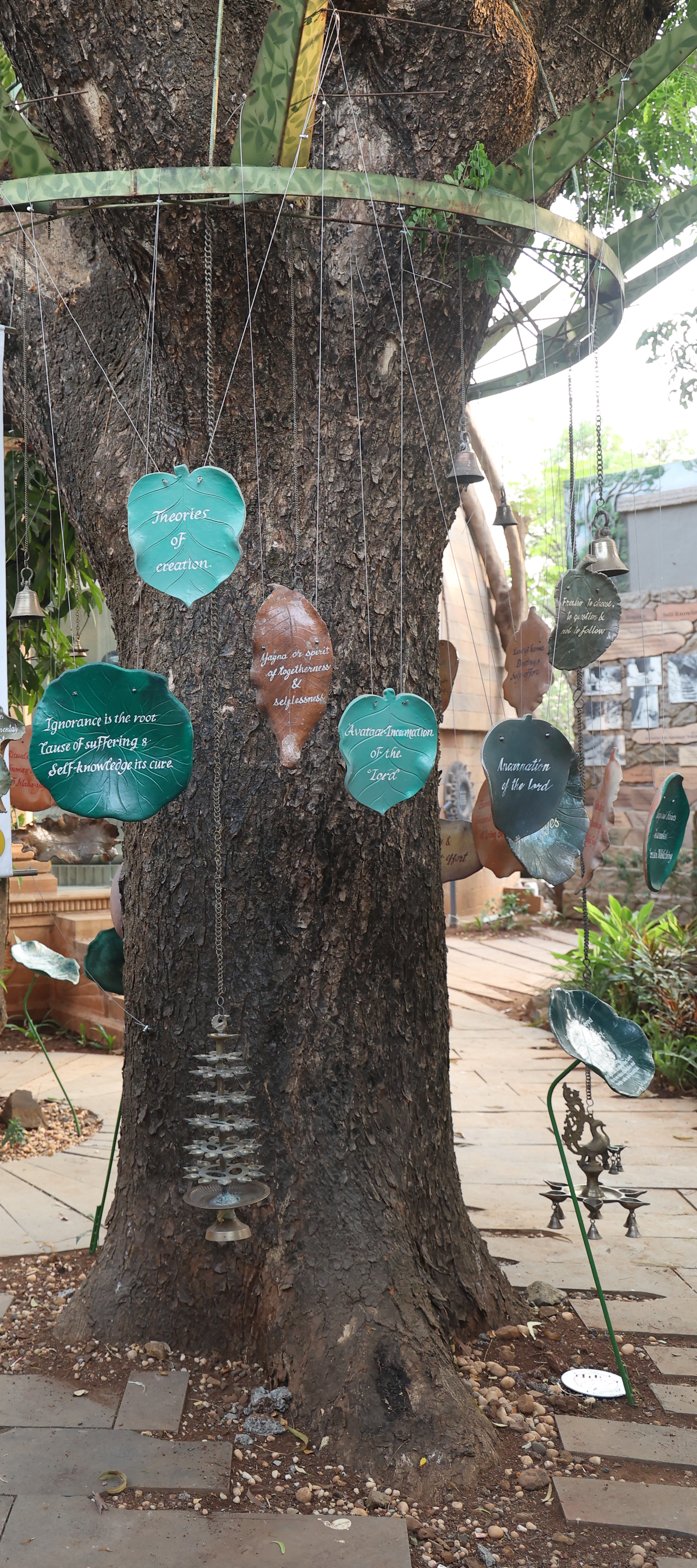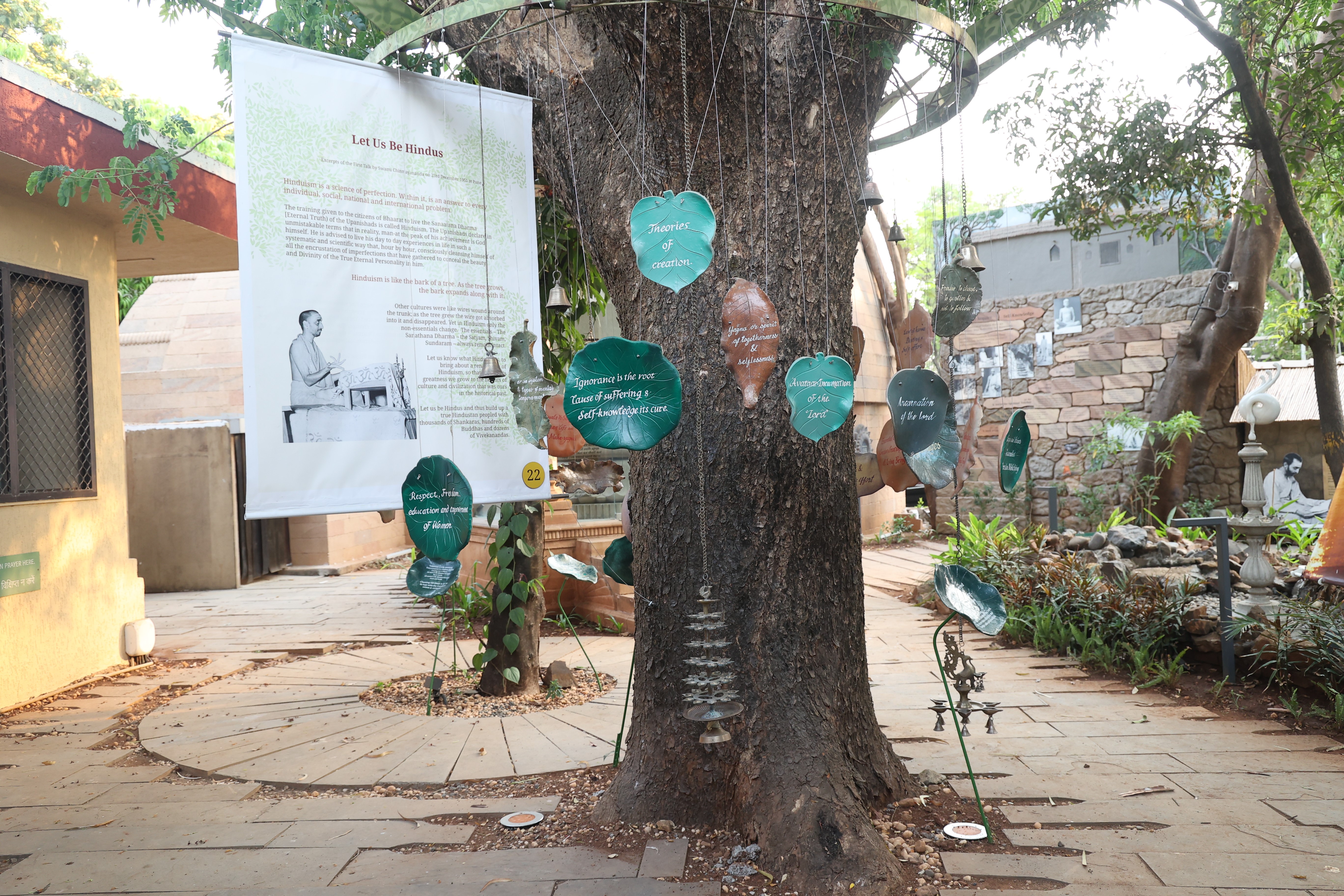The Tree of Hinduism
The first yagna was from 31st December 1951 to 8th April 1952.
Swami Chinmayananda compared Hinduism to a Tree that is constantly growing and adapting. In the Video section there is a talk of Swami Chinmayananda on Hinduism, using the analogy of a Tree.
The Hinduism area is divided into different sections:
1. The Hinduism Tree, which is a Sita Ashoka tree. This tree signifies a state of being free from Shoka or Sorrow. Its the tree under which Sitaji sat in the Ashoka Vatika in lanka. The essence of Hinduism is to live a life of Supreme Happiness & Fearlessness. Pradakshina can be done around this tree to signify that may our lives revolve around Fearlessness and Happiness alone.
2. The next tree has the extracts of the first talk of Swami Chinmayananda- Let us be Hindus. Also, 30 Salient Features of Hinduism are hung on the Hinduism Tree. Knowing these is to know the essence of Hinduism.
3. Hindu Knowledge-Chart, which covers many diverse branches of Knowledge. It is on the walls of Swami Chinmayanandaji’s kutia
4. Why do we? What is the significance of certain things and practices in Hindu Culture - Pradakshina, Namaste, Kalash Sthapana, Aarti, 108, Tulasi plants etc.
5. Essential Hinduism - Core concepts of Hinduism that were revived by Swami Chinmayananda. This comes ahead opposite the Lotus Pond.





